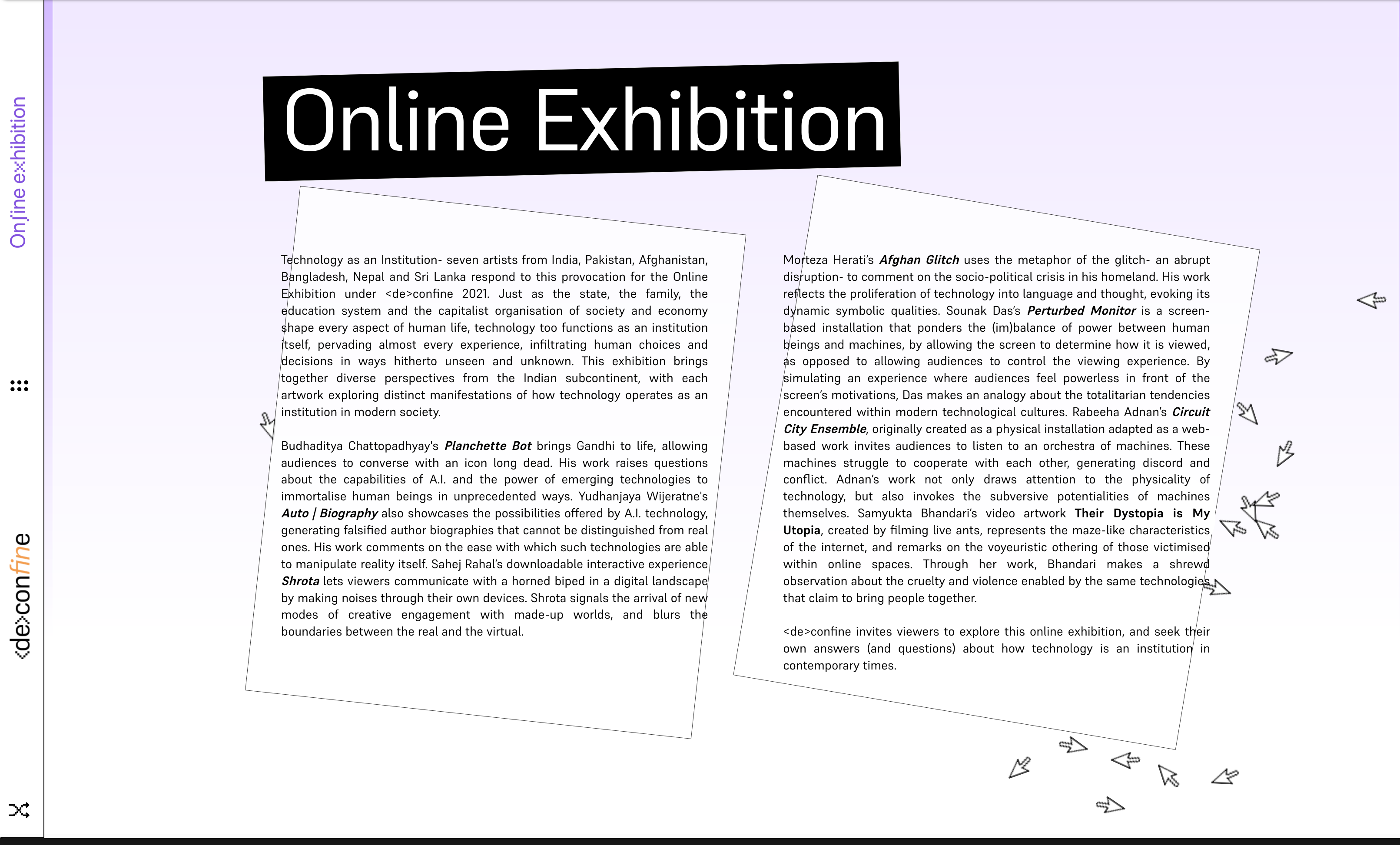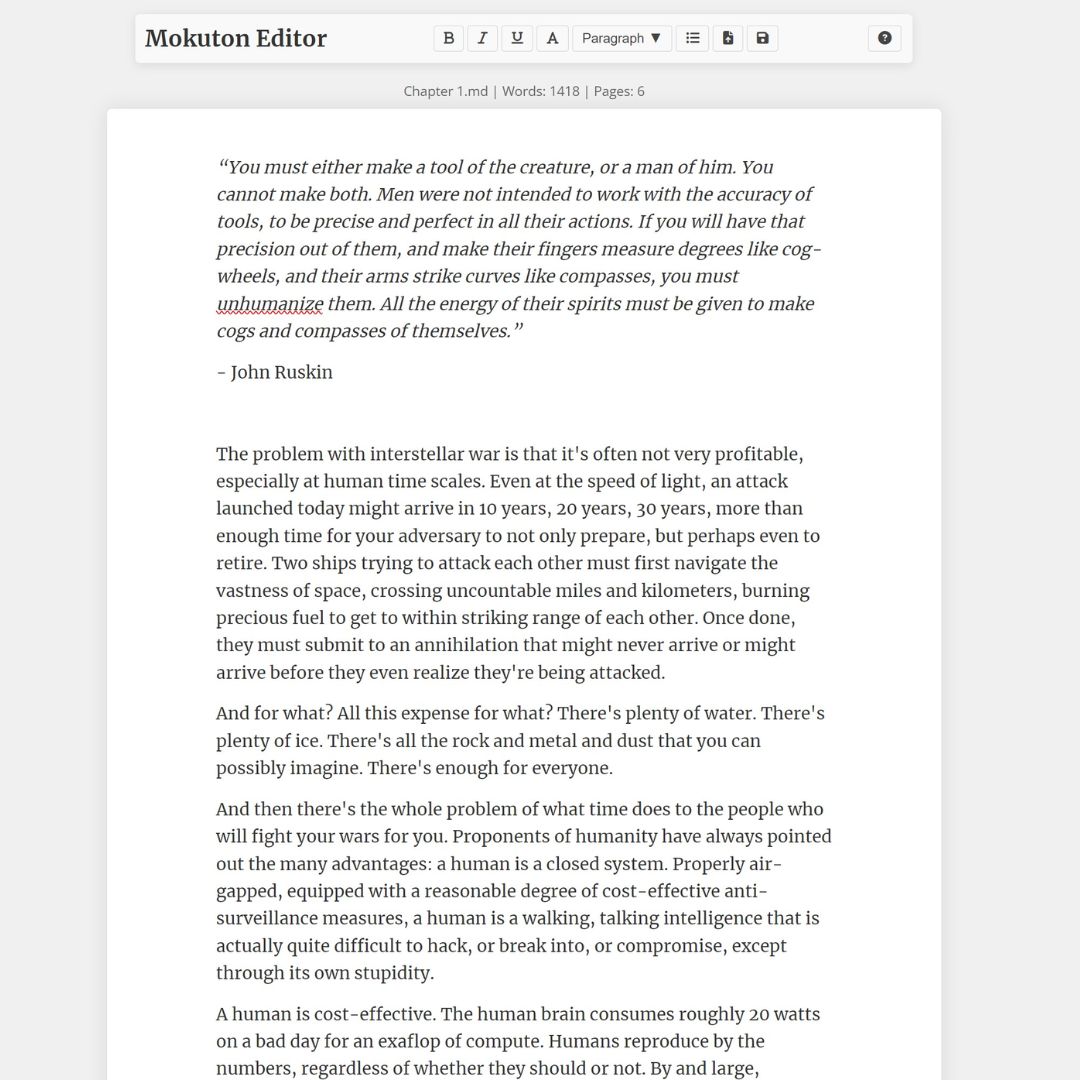
Auto | Biography
An online exhibition in which I offered a small, terrifying glimpse of the future: AI-generated author biographies.
| In 2021, I was invited to contribute to deconfine 2021, an exhibition hosted by Media Arts South Asia in collaboration with the Alliance Francias. It featured seven South Asian artists exploring how technology pervasively shapes human life and functions as an institution. My contribution was Auto | Biography, AI-generated, fake author biographies, a commentary on something that we were growing increasingly concerned - the ease with which the nascent genAI technology let us manipulate reality. |

Entries ranged from:
Rachel Newhouse
Rachel Newhouse (April 23, 1923 – January 26, 1997) was an American artist, writer, translator, critic, and culture critic.
Newhouse had a long and distinguished professional and literary career, but her greatest gifts have been her ability to make herself accessible to readers of all persuasions. The most well-known period of her career spans from the late 1940s through the late 1970s, and was mainly based on her love of Jules Verne's science fiction; Newhouse's renown lies in the popular novels she wrote, including "The Shining Man" and "The Road to Jerusalem". Newhouse wrote many of these novels under the pseudonym Sinead Fleming Newhouse, and often referred to herself by that pseudonym.
Newhouse wrote so many novels that, as recently as 1998, it was considered to be impossible to see her work through a conventional literary analysis. Newhouseherself stated that “I came to realize that my books are not just one thing, that many of my subjects are of many different sorts, and that so long as I chose to identify as a writer, I would be holding an entire ecosystem in her hands, including many less-well known properties in the genre”.
In later work, Newhouse would frequently depicts human beings as objects in work and action, objects which are put in the service of a human society.
to
Hirokazu Nakagawa
Hirokazu Nakagawa is a Japanese manga artist, novelist, researcher, essayist and translator. His work often features crime fiction, science fiction, romance, fantasy and humor. As an author, he authored three books of short stories.
Nakagawa's short stories include several critically acclaimed pieces: "Down in the Memerum Conti", "Ranbow Hearts", "Kanoza Boy", "How to Say Goodbye", "Eight, Three, Five, Four", and "Teriru ka." Many of these stories were written under the names Tadashi Obata and Takurō Kaneda, while serving in the Japan Maritime Self-Defense Force. Nakagawa's short stories have been published in a number of manga publications, including "Fujinbo", "Kotodosha" and "Ichijo".
From 1985 to 1990, Nakagawa edited and translated the anthologies "Manga Masa" (publishers: Kinema) and "Tin Min An" (publishers: Arashii). From 1987–1998 Nakagawa worked on the manga "Shin-Gakuen", which was a commercial failure and let to his public retirement from being a manga artist.
to
In 1880, Hilaire Watt, a then 20-year-old native of Birmingham, created his first ever comic strip. The tale of the homicidal Stan Pendragon ran in a Sunday newspaper, the Derby Herald, for six weeks. So popular was it that the Met bought the rights to the strip and sent it in for a reprint. With the assistance of a fellow Manchester City pupil, Thomas McLoughlin, Watt wrote, illustrated and inked a series of club-compilations featuring Stan Pendragon - 'Aces and Holes' and 'Lorein' - while also producing couple of short-story collections, 'Stamped, Spirit, Hell' and 'The Squalid Entailers of the History of Childhood'.
With the introduction of British independent presses, such as Arsenal, Watt became an overnight sensation. His comic strips were published by the Met and Arsenal; in 1888, Watt won a Christmas prize in the New Editions Literature Competition and was a founding member of the Guild of Novelists.
Watt used the profits to start the Birmingham Telephone System, with a service dedicated to Alfred Tennyson and his short stories. On 3 January 1891, following an argument with the head of Birmingham's Centre for Literary Studies, Watt was ejected from the board of directors. He won his term as director of the company again in 1896.
In 1898, an incident involving one of Watt's sons was reported in the Birmingham Mail and in September 1899, the Editor of the Birmingham Telegraph newspaper was accused of indulging in cronyism and political jockeying alongside the Watts family. The Telegraph rejected the allegations, ruling that the newspaper "cannot possibly form the story". The following year, Watt was elected chairman of Birmingham City Council; the ongoing scandal forced him to resign.
In other words: entirely plausible nonsense, of the terse language and prose that Wikipedia often reserves for the less-than-celebrities among us; the kind of subtle and insidious social proof that can make someone or something seem legitimate.
Each biography was accompanied by photos (via Thispersondoesnotexist, a very notable project at the time).
Naturally, this seems to be one of those “don’t invent the Torment Nexus” things where the actual shape of things makes my imagination here look innocent. The text game is happening - bots throughout X, Facebook, Reddit, and so on - but we also have full-fledged AI influencers complete with video and voice now.
Others:
- Budhaditya Chattopadhyay - Planchette Bot: Uses AI to “resurrect” Gandhi for audience interaction, questioning AI’s power and potential for immortalization.
- Sahej Rahal - Shrota: Offers a downloadable interactive experience where users communicate with a digital creature using sound, blurring real and virtual boundaries.
- Morteza Herati - Afghan Glitch: Employs the “glitch” metaphor to critique Afghanistan’s socio-political crisis and technology’s influence on language and thought.
- Sounak Das - Perturbed Monitor: Presents a screen installation that reverses viewer control, reflecting on power imbalances and totalitarian tech tendencies.
- Rabeeha Adnan - Circuit City Ensemble: Features a web-based orchestra of uncooperative machines, highlighting technology’s physicality and subversive potential.
- Samyukta Bhandari - Their Dystopia is My Utopia: A video of live ants depicting the internet’s maze-like nature and the voyeurism and cruelty it enables.

